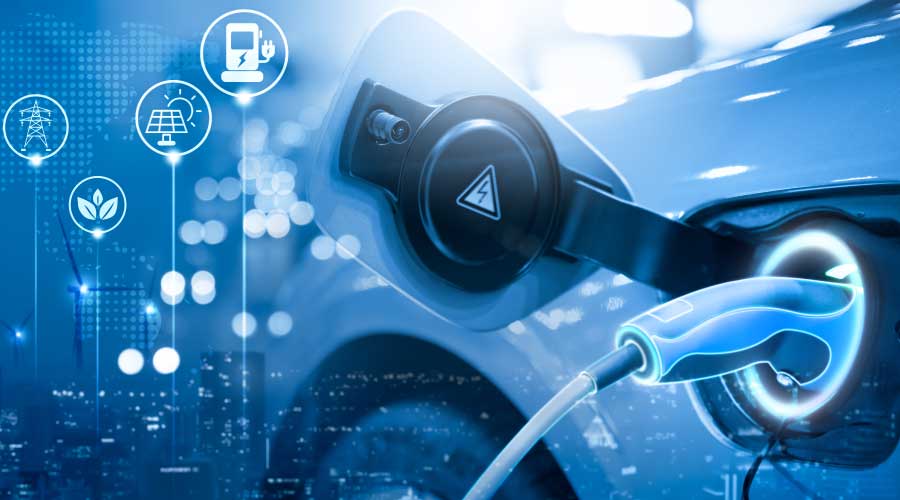Top 5 Challenges to Retrofitting for Electric Vehicle Charging
Adding Electric Vehicle Supply Equipment (EVSE) can be expensive, but understanding the challenges ahead of time can mitigate the cost.
By Elbert Walters III, Contributing Writer
Electric vehicles (EVs) symbolize a pivotal shift towards sustainability and reduced carbon emissions. According to a report by the National Renewable Energy Laboratory (NREL), by 2030, there could be between 30 and 42 million EVs on roads in the light-duty vehicle segment. This projection underscores the urgent need for charging infrastructure growth and enhancement in the coming years.
While the benefits are obvious, facility managers and building owners face challenges when incorporating electric vehicle supply equipment (EVSE) into existing structures. This includes ensuring safety and functionality, navigating complicated regulations, managing utility resources, optimizing existing assets, and addressing facility conditions, all while controlling costs.
The good news is you don’t have to do it yourself. Savvy building owners and facility managers have discovered the key first step to approaching their EVSE retrofitting project — selecting a qualified contractor. But what makes a contractor qualified? The distinction lies in the contractor’s credentials and commitment to safety and quality. Selecting a signatory electrical contractor known for extensive training and adherence to the latest safety standards is crucial. They ensure safe and proper installations, setting them apart from non-signatory contractors who may lack updated training and safety knowledge potentially leading to unsafe and improper installations. Choosing the right electrical contractor is about more than just facilitating the installation process; it ensures efficient resource utilization, cost management, and compliance with industry standards, all of which are vital for seamless project management.
Five main challenges of retrofitting a building for EV charging
While each construction project is unique, there are five common challenges that facility managers and building owners must address when incorporating EVSE into existing buildings.
1. Cost: Installing EV charging can require substantial electrical system upgrades that can be costly. For example, retrofitting an existing parking garage to add EV charging may require running new conduit and wiring to each parking space. Creative approaches like phased enhancements over time, utilizing cost offset programs, and starting with lower capacity ports can help to manage expenses.
2. Power capacity: Many buildings lack spare capacity for multiple high-draw EV ports like DC fast charging. Work with your electrical contractor to review electrical systems, right-size charger specifications for lower capacity level 2 ports, and explore updated utility rates to help right size capacity upgrades.
3. Space and parking spots: Finding space for EV charging in crowded parking areas is difficult, and distant spots raise installation costs. Alternatives like valet charging, stacked parking, designated EV spots, and mounting on existing infrastructure can optimize available room.
4. Permitting and regulations: Navigating the various codes and approval processes for installing EVSE can be complex. Working with contractors experienced in EV charging regulations can simplify required paperwork and compliance. To find a reputable electrical contractor in the Chicagoland area, visit Powering Chicago’s Find a Contractor tool. If you’re outside of Chicago, visit the National Electrical Contractors Association (NECA) search tool.
5. Accessibility: EV charging placement must provide convenience for drivers but also accommodate Americans with Disability Act (ADA) access needs. Options including designated accessible ports, maintaining standard ADA spaces, and using signs for accessible routes can address these considerations.
While retrofitting buildings poses challenges, adding EVSE to any structure also requires careful planning and design. Some key considerations can include:
1. Load management: Smart charging functionality is often beneficial to balance loads and prevent capacity being exceeded during peak charging times. Capabilities like built-in load balancing, integration with facility energy systems, and scheduled charging can assist with demand management.
2. Future proofing: Installations should accommodate increased EV adoption over the next 5-10 years, which may require additional chargers. Strategies including above-code electrical capacity, reserving space for future stations, and modular deployments can enable scaling.
3. Maintenance: The ongoing costs of maintenance, software and repairs for EVSE should be planned for, as it involves more complex equipment than standard parking infrastructure. Preventative maintenance and regular inspection of EVSE is key. Proactive steps like service agreements, staff training, monitoring systems, and long-term budgets can simplify maintenance needs.
Once an amenity, charging infrastructure is now essential. Upgrading existing buildings poses challenges, but proactive planning and strategic investments will enable long-term success. With forethought, commitment and an eye to the future, facility managers can pave the way for more welcoming facilities and a clean energy future.
Elbert Walters III is Executive Director of Powering Chicago.
Related Topics:












